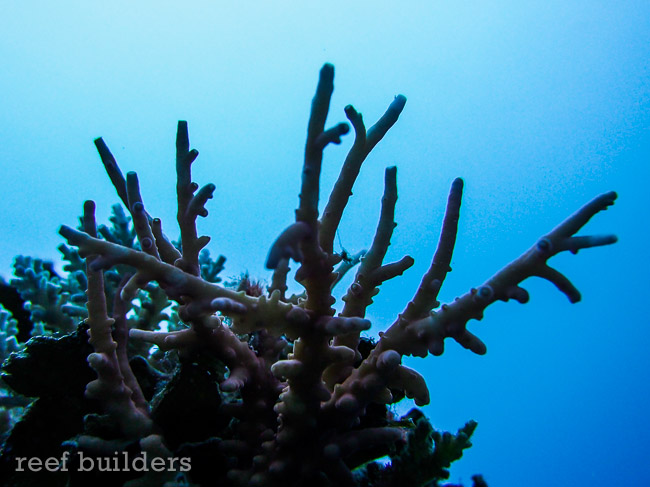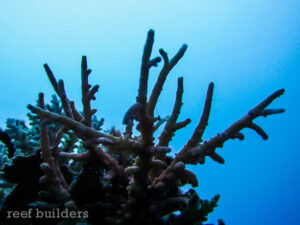Ever first we learned and wrote about the exquisite Acropora rongelapensis, it has been on our bucket list to go to the Marshall Islands to find and photograph this species in the wild. Last week we just happened to be on a diving binge in Kwajalein Atoll and fulfilled a true coral geek’s dream, to find and see for ourselves how special Acropora rongelapensis really is.
With such an abundance and diversity of stony corals in the Marshall Islands, at times it was hard to tell where similarly smooth Acroporas like A. elegans and A. tenella ended, and where A. rongelapensis began. There seems to be a gradient of morphology between this group of deepwater and sheltered Acros, but with persistence and diligent observation it was possible to scout out some colonies of the “Ronggie” that looked pure in form, and closely resemble images published in the original species description.
[singlepic id=10855 w= h= float=none]
The first reports of Acropora rongelapensis were of colonies from about 100 feet deep and while we found a fair share of colonies in Kwajalein Atoll at this depth range, it was also possible to find them shallower, especially in sheltered areas of the reef or growing in the shade of much larger stony coral species. The habitat of the Ronggies definitely qualifies as low energy, protected from direct light and in fairly subdued water flow, and it was frequently found growing in close proximity to the Red Devil Acro that we were awestruck to find in the world’s largest coral atoll.
While we did expect to find the Ronggie, we didn’t expect such a variety of both colony shape and colors. Many A. rongelapensis colonies range from a light brown, to light brown with blue tips, and even in the same color scheme as the Red Devil Acropora tenella; red with blue tips and brightly colored polyps, but these were a small fraction of the colonies sighted in Kwajalein. Who knows what the future may hold for the potential of this species to become available to aquarists but for now we have the great pleasure of sharing with you this nearly unknown yet distinct species of deepwater Acro from the Marshall Islands.




